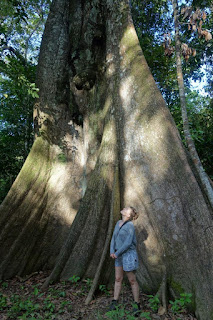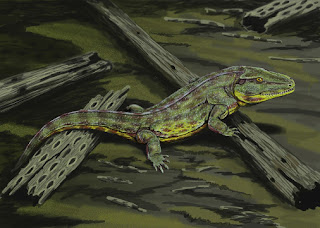ecology
Trees struggle when forests become too small

Researcher Emma-Liina Marjakangas in the Mamirauá Sustainable Development Reserve in Brazil. Marjakangas was first author on a paper that explored how forest fragmentation affected seed dispersal, among other factors.
Photo: Antti Miettinen
conservation
Near caves and mines, corrugated pipes may interfere with bat echolocation
Corrugated metal pipes have been installed at cave and mine entrances to help bats access their roosts, but a new study from Brown University researchers suggests that these pipes may actually deter bats.
nanoworld
A quantum of solid
Researchers in Austria use lasers to levitate and cool a glass nanoparticle into the quantum regime. Although it is trapped in a room temperature environment, the particle's motion is solely governed by the laws of quantum physics. The team of scientists from the University of Vienna, the Austrian Academy of Sciences and the Massachusetts Institute of Technology (MIT) published their new study in the journal Science.
Nanotechnology: Putting a nanomachine to work
sustainability
In Cuba, cleaner rivers follow greener farming
For the first time in more than 50 years, a joint team of Cuban and US scientists studied the water quality of twenty-five Cuban rivers and found little damage after centuries of sugarcane production. They also found nutrient pollution in Cuba's rivers much lower than the Mississippi River. Cuba's shift to conservation agriculture after the collapse of the Soviet Union -- and reduced use of fertilizers on cropland -- may be a primary cause.
Can wood construction transform cities from carbon source to carbon vault?
If it takes a hike, riders won't go for bike sharing
Even a relatively short walk to find the nearest bicycle is enough to deter many potential users of bike sharing systems, new Cornell research suggests.
That's weird. What would put me off is the children's size of the dockless bikes, the cost (compared to walking for free) and the big data strings attached. In a city where I don't have my own bike, I'm happy to walk for hours ...
humans
New study identifies Neanderthal ancestry in African populations and describes its origin
see also yesterday's news media link.
---------------
From the news media:
Where would we be without EU environmental laws? A study from the Netherlands provides some clues, the Guardian reports.

























